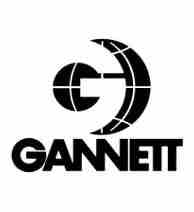Gannett Co., Inc. (NYSE:GCI), the largest U.S. newspaper in terms of daily circulation, recently made a huge splash in the local television industry after its $2.2 billion acquisition of Belo Corp (NYSE:BLC), the owner of 21 local television stations across the United States. The acquisition, which more than doubles Gannett Co., Inc. (NYSE:GCI)’s portfolio of television stations to 43, will make it the largest operator of local affiliates in the country. Is this newfound dominance of both print media and television in the United States a positive catalyst for Gannett Co., Inc. (NYSE:GCI)’s further growth, or has the company bitten off more than it can chew?
Avoiding the fate of its peers
Gannett Co., Inc. (NYSE:GCI)’s most well-known property is its national newspaper, USA Today. The company also owns local newspapers, including The Arizona Republic, The Indianapolis Star, The Cincinnati Enquirer, and the Tennessean, among others. It is also invested in several Internet properties, such as PointRoll, BNQT Media Group, ShopLocal and a joint stake in CareerBuilder.
Gannett Co., Inc. (NYSE:GCI)’s expansion over the past few years has been in stark contrast to the gradual shrinkage of The New York Times Company (NYSE:NYT). In 2007, The New York Times Company (NYSE:NYT) sold its Broadcast Media Group, which included nine local affiliates, to private equity firm Oak Hill Partners, for $575 million. At the time of the sale, the segment was a profitable one for the company, generating 4% of its annual top line. The New York Times also sold its Regional Media Group, which consisted of 16 regional newspapers, to Halifax Media Holdings in 2011. Unlike the more profitable Broadcast Media Group, its Regional Media Group reported an 8.2% year-on-year decline in revenue in 2010. The segment accounted for 11% of the company’s top line at the time of the sale.
Meanwhile, The Washington Post Company (NYSE:WPO) has suffered less than The New York Times, thanks to its Kaplan educational division, its six local television affiliates and its Cable ONE network. Last quarter, the Post’s television network and cable business were its only profitable business segments, helping offset some of the losses at its print media division.
Therefore, Gannett Co., Inc. (NYSE:GCI) appears to be taking a hint from the fate of these two former print media heavyweights by making an all-in bet that local television will remain a profitable long-term investment.
Hey there, big spender…
Prior to the Belo Corp (NYSE:BLC) acquisition, Gannett was already the largest owner of NBC-affiliated stations. After the deal closes, the company will also become the largest owner of CBS stations and the fourth-largest owner of ABC stations in the country. The plan is ambitious, but some investors wonder if Belo Corp (NYSE:BLC) is worth the 28% premium that Gannett paid for the company at $13.75 per share.
Gannett currently has $142.8 million in cash and $1.45 billion in debt. It plans to pay $1.5 billion in cash and assume $715 million in debt to acquire Belo Corp (NYSE:BLC). This massive deal will weigh on its earnings for several quarters, and could cause problems if the deal doesn’t become earnings accretive in a timely manner. The deal also has to be approved by the FCC, antitrust regulators, as well as two-thirds of Belo Corp (NYSE:BLC)’s voting shareholders. Considering that Belo Corp (NYSE:BLC) posted 16.7% year-on-year earnings growth on 2.8% revenue growth last quarter, and the stock had nearly doubled over the past twelve months prior to the buyout offer, it’s possible that Belo shareholders could pressure Gannett for a higher offer.
Last quarter, Gannett’s Broadcasting revenues, which include its digital display network Captivate, rose 8.7% over the prior year quarter, thanks to robust growth in retransmission and core advertising revenue. This segment accounts for 15% of Gannett’s top line. Digital revenues from its Internet properties rose 3.9% to $174.9 million, accounting for 14% of its top line.
However, 70% of Gannett’s revenue still comes from its newspaper publishing business, which posted a marginal year-on-year decline to $871.2 million. Its publishing circulation revenue improved 8.6%, but its publishing advertising revenues declined 4.5%. Operating income at the publishing division declined 17.1%. Although Gannett’s newspaper business fared better than The New York Times and The Washington Post Company (NYSE:WPO), which reported profit declines of 93% and 85%, respectively, the publishing business is still a tough one to prop up.
We expand or we die
To avoid being too exposed to the newspaper industry, Gannett has wisely diversified its portfolio across more businesses than either The Post or The Times. The massive acquisition of Belo is aimed at reducing the importance of its newspaper business not by shrinking it, but rather by doubling its broadcast portfolio through a massive acquisition that makes television a much more significant part of its top line.
Belo’s operations are expected to contribute $680 million in annual revenue and $230 million in EBITDA, more than doubling Gannett’s current top and bottom line growth in the broadcast segment. In addition, Gannett estimates that the merger will generate $175 million in synergies over the next three years, as the company eliminates redundancies and increases its negotiating clout with advertisers.
The Foolish Bottom Line
Although Gannett’s bet is a huge one, it could also be a very profitable one if it succeeds. The company is wise to decrease the relevance of its print business through expansion, which will help it escape the dire fates of The New York Times and The Washington Post.
Fundamentally, Gannett is still a cheap stock, trading at 10.1 times forward earnings with a 5-year PEG ratio of 1.4. The stock also pays a quarterly dividend of $0.20 per share – a 3.2% yield at current prices. Therefore, despite surging more than 90% over the past twelve months, Gannett could still be a solid long-term investment, especially if it meets its own projections for the Belo acquisition. A bigger, stronger Gannett will have increased leverage over advertisers and cable operators over fees, which could boost its bottom line growth substantially.
The article Has This Media Company Bitten off More Than it Can Chew? originally appeared on Fool.com.
Leo Sun has no position in any stocks mentioned. The Motley Fool has no position in any of the stocks mentioned. Leo is a member of The Motley Fool Blog Network — entries represent the personal opinion of the blogger and are not formally edited.
Copyright © 1995 – 2013 The Motley Fool, LLC. All rights reserved. The Motley Fool has a disclosure policy.




